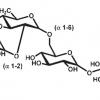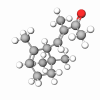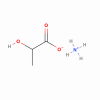Vitamin E (tocopherol) has been shown to take part in a number of different biochemical reactions in the body. It is a powerful free radical scavenger, boosts immune function, and helps in the formation of red blood cells along with the trace minerals, selenium, vitamin A, and vitamin K.
When applied to the skin, vitamin E is believed to promote healing, slow the effects of aging from free radical damage, and reduce itchiness. Wheat germs, almonds, and vegetable oils are a few prime sources of vitamin E.
Vitamin E is complexed with low molecular weight wheat proteins or polypeptides to form Tocopherol/Wheat Polypeptides, which are water dispersible. The solubility and protein complexation are of prime importance for the utilization of the vitamins. Thanks to conjugation with hydrolyzed wheat raw material, Tocopherol/Wheat Polypeptides's absorption is greatly increased, infiltration into the dermal structures is facilitated, and toxicity or irritation potential is almost completely eliminated.










